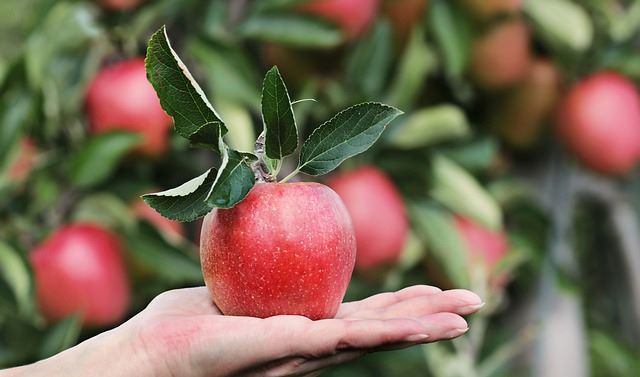Monsoon in India brings not just rain but a variety of delicious and nutritious fruits. These fruits are not only refreshing but also packed with essential nutrients that help boost immunity during the rainy season. Here, we explore some of India’s most notable types of monsoon fruits, including their origins, history, where they are found, availability, and unique properties.
Contents
1. Jamun (Indian Blackberry)
- Origin: India, Southeast Asia
- History: Used in traditional Indian medicine for its health benefits, particularly in managing diabetes.
- Found in: Uttar Pradesh, Maharashtra, Tamil Nadu, and Karnataka
- Availability: June to August
- Unique Property: Known for its deep purple color and sweet-tart flavor. Rich in anthocyanins, which have antioxidant and anti-inflammatory properties.
2. Litchi (Lychee)
- Origin: Southern China
- History: Cultivated in India since the 18th century, especially in the northern and eastern regions.
- Found in: Bihar, Uttar Pradesh, and West Bengal
- Availability: May to July
- Unique Property: Known for its translucent white flesh and sweet, fragrant flavor. Rich in vitamin C and antioxidants.
3. Mango (Late Varieties)
- Origin: India
- History: Cultivated in India for over 4,000 years, with several varieties extending into the monsoon season.
- Found in: Maharashtra, Karnataka, Andhra Pradesh, and Gujarat
- Availability: June to August
- Unique Property: Known for their juicy, sweet flavor and rich aroma. Varieties like Langra, Neelum, and Dasheri are popular during the late season.
4. Plum (Aloo Bukhara)
- Origin: China
- History: Brought to India and widely cultivated for its sweet and tangy flavor.
- Found in: Himachal Pradesh, Uttarakhand, and Jammu & Kashmir
- Availability: May to July
- Unique Property: Known for its juicy, sweet-tart flavor. Rich in dietary fiber, vitamins A and C.
5. Peach (Aadoo)
- Origin: Northwest China
- History: Introduced to India through trade routes and widely grown in the hilly regions.
- Found in: Himachal Pradesh, Uttarakhand, and Jammu & Kashmir
- Availability: May to September
- Unique Property: Known for its sweet, juicy flesh and velvety skin. Rich in vitamins A and C, and dietary fiber.
6. Cherry
- Origin: Europe and Asia
- History: Cultivated in India, particularly in the northern hilly regions, for its delicious taste and nutritional benefits.
- Found in: Himachal Pradesh and Jammu & Kashmir
- Availability: May to July
- Unique Property: Known for their bright red color and sweet-tart flavor. Rich in antioxidants, vitamins A and C.
Also, watch web stories: What are some health tips that are easy to follow?
7. Pear (Nashpati)
- Origin: Western China
- History: Cultivated in India, especially in the northern regions, for its crunchy texture and sweet flavor.
- Found in: Himachal Pradesh, Uttarakhand, and Jammu & Kashmir
- Availability: July to October
- Unique Property: Known for its sweet, juicy flavor and crunchy texture. Rich in dietary fiber, vitamins C and K.
8. Pineapple
- Origin: South America
- History: Introduced to India by the Portuguese in the 16th century and widely cultivated in the tropical regions.
- Found in: West Bengal, Assam, and Karnataka
- Availability: May to August
- Unique Property: Known for its sweet, tangy flavor and high vitamin C content. Contains bromelain, an enzyme with anti-inflammatory properties.
9. Papaya
- Origin: Central America
- History: Introduced to India by the Spanish and Portuguese in the 16th century, now widely grown across the country.
- Found in: Maharashtra, Karnataka, and West Bengal
- Availability: Throughout the year, with peak season during the monsoon
- Unique Property: Known for its sweet, orange flesh and numerous health benefits. Rich in vitamin C, vitamin A, and digestive enzymes like papain.
Also, read: Different Types of Pomegranates in India You Need to Know Now
10. Guava (Amrud)
- Origin: Central America
- History: Introduced to India by the Portuguese in the 17th century, now widely cultivated in various regions.
- Found in: Uttar Pradesh, Maharashtra, Bihar, and Karnataka
- Availability: August to October
- Unique Property: Known for its sweet-tart flavor and high vitamin C content. Also rich in dietary fiber and antioxidants.
Nutrition Chart of Monsoon Fruits
Monsoon fruits are not just delicious but also packed with essential nutrients. Here’s a general nutritional profile of a mix of these fruits per 100 grams:
| Nutrient | Amount |
|---|---|
| Calories | 60 kcal |
| Carbohydrates | 15 g |
| Sugars | 12 g |
| Dietary Fiber | 2.5 g |
| Protein | 0.8 g |
| Fat | 0.3 g |
| Vitamin A | 54 µg |
| Vitamin C | 36 mg |
| Vitamin E | 0.9 mg |
| Vitamin K | 5.4 µg |
| Potassium | 200 mg |
| Magnesium | 10 mg |
| Phosphorus | 14 mg |
| Folate | 20 µg |
| Calcium | 15 mg |
| Iron | 0.5 mg |
| Zinc | 0.2 mg |





